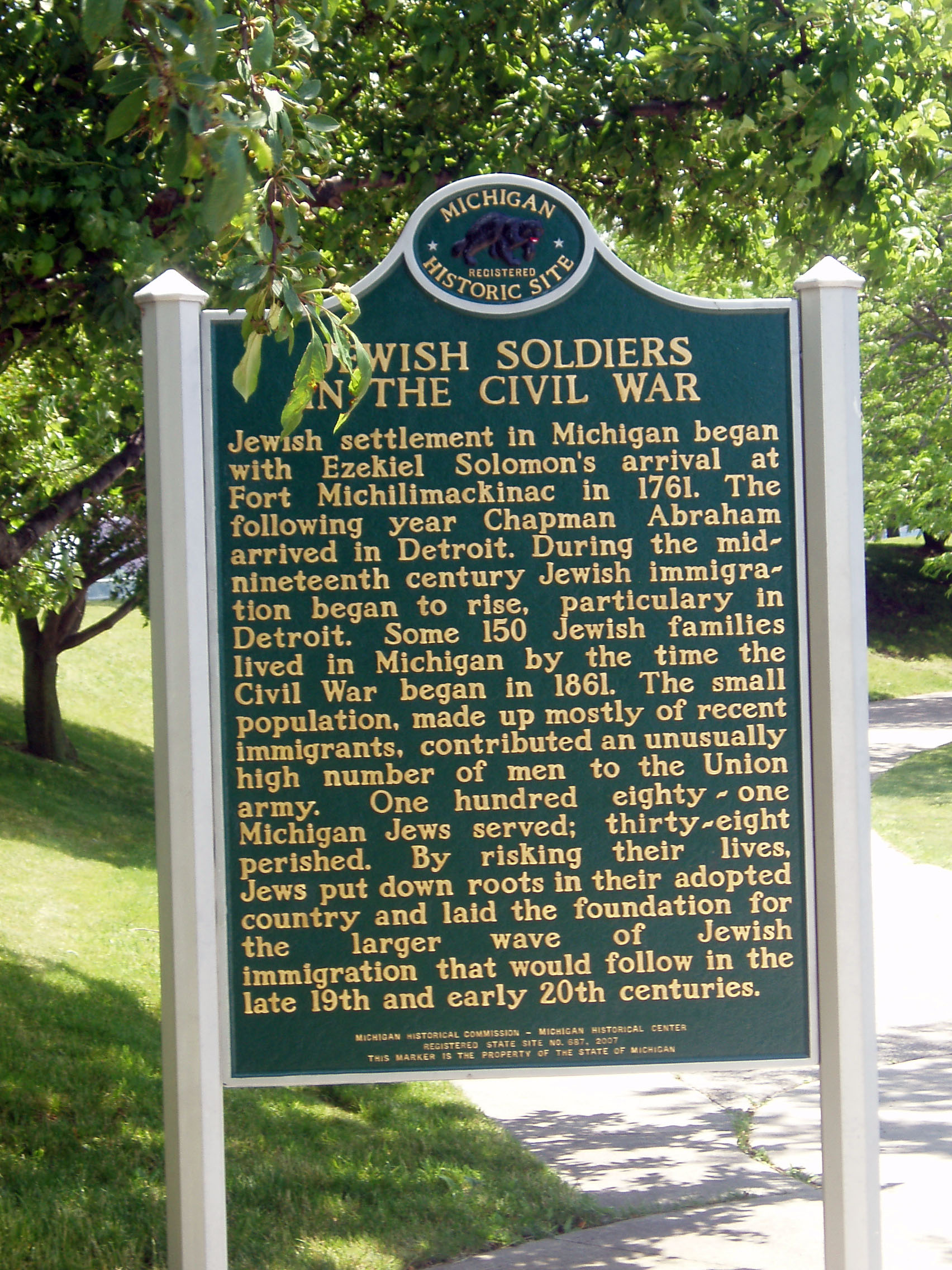

Chapman Abraham, whose achievements are honored on the other side of the historical marker pictured above, was the first Jewish resident of Detroit. A few—but very few—Jews lived in Detroit before the 1840s. Isaac Moses, who was presumably an English Jew, joined the city’s Masonic Lodge in 1798, just two years after Colonel Jean François Hamtramck took down the Union Jack and planted the United States flag in the village. Louis Benjamin, another Jew, was granted land in Detroit in 1808 to compensate him for losses suffered in the great fire of 1805 that destroyed the village. Frederick Cohen, an English Jew, served in the Canadian militia during the Canadian rebellion in 1837, but then migrated to Detroit where he became a portrait artist. He was the Michigan’s first Jewish artist and his self portrait is in the collection held by the Detroit Institute of Art.
The 1840s marked a turning point. German Jews began to come to the United States in considerable numbers, many of them settling in Cincinnati which already had a large German population. Many of these were greatly assimilated German Jews who would join the Reform Judaism movement shortly after arrival. By the late 1840s, Cincinnati may have had the nation’s largest German and Jewish populations. Many Jews were traders so they traveled throughout the Midwest and gradually populated the larger cities. By 1850, there were sufficient Jews in Detroit to found the Beth El Congregation. This was founded as an Orthodox congregation but, eleven years after its establishment it became a Reform congregation. Those who wish to preserve Orthodox Judaism founded the Congregation Shaarey Zedek.
There was little migration to the United States from Europe in the early decades of the Nineteenth Century and an image developed of this country as a Prostestant, Anglo-Saxon nation. As the Irish started to arrive in large numbers in the 1840s, questions were raised about whether they could be assimilated or were they so intellectually and physically deficient that they should not be welcomed. Similarly, questions were raised about the Jews who started to arrive in substantial numbers at about the same time as the Irish. The early Jewish immigrants from Germany, however, were typically more highly educated than many of the Irish immigrants. Those opposed to these immigration streams raised questions about the changing values of the United States but were not able to limit entry to Anglo-Saxon Prostestants.
One way for these new immigrants to demonstrate that they were already or could readily become real Americans was to serve in the military. As this Michigan historical marker indicates, about 181 Jews from Michigan fought for the Union in the Civil War with a very substantial loss of life—28 decedants. Their dedication to the Union may have helped their assimilation. Alas, the sacrifices of these Jews in the battle to preserve the nation did not prevent Detroit from becoming—two generations later—something of a national center for anti-Semitism. Both Henry Ford and Father Charles Coughlin published the Protocols of the Elders of Zion and espoused views that were seen by many as strongly anti-Jewish.
Date of Installation: 2008
Book: The Jews of Detroit, From the Beginning: 1762 to 1914. Detroit: Wayne State University Press, 1986.
Photograph: Ren Farley; June 21, 2009
Use in 2009: Historical Marker
Description updated: June, 2012
Return to Military Sites and Personnel
Return to State of Michigan Historical Markers